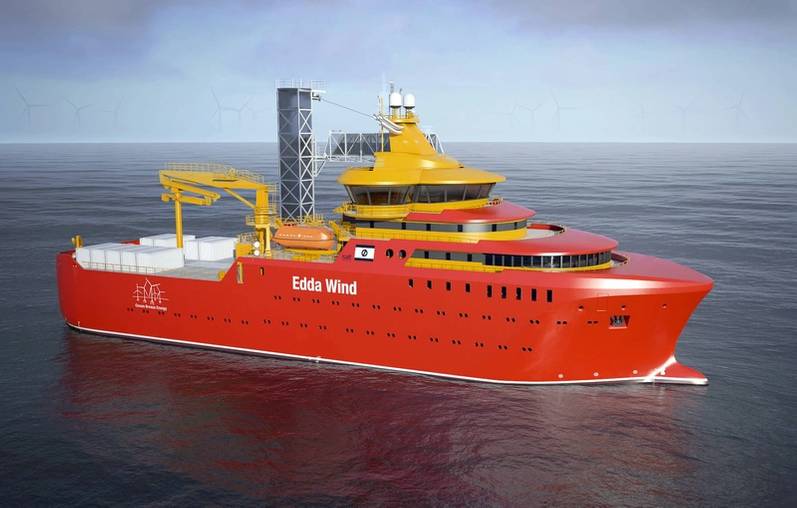Østensjø Wins Long-Term Charters for Offshore Wind Vessel Duo
Østensjø Group's offshore wind business Edda Wind has signed long term time charter deals with MHI Vestas and Ocean Breeze Energy respectively for two of the four offshore wind vessels ordered from Spanish yards.
The charter agreement with MHI Vestas for a newbuild Service Operation Vessel (SOV) will start in the second quarter of 2022 and has a firm period of 15 years.
The charter agreement with Ocean Breeze will start in the first quarter of 2021 and has a firm period of 11 years.
The contract will be served by a frontrunner vessel for the first year before the newbuild Commissioning Service Operation Vessel (CSOV) will be delivered in the first quarter of 2022.
The ships will serve as mother vessels for wind turbine technicians as they perform commissioning and maintenance work on offshore wind turbines.
The CSOVs are 88.3 meter and the SOVs 82.4 m in length. All units will be equipped with high standard cabins and common areas where the CSOVs can accommodate up to 120 persons and the SOVs 60 persons in total.
Edda Wind has signed a construction contract for two CSOVs at Astilleros Gondán and a construction contract for two SOVs at Astilleros Balenciaga.
The plan is for the second SOV and the second CSOV to both be delivered in the fourth quarter of 2022. Edda Wind has also secured slots for more sister vessels. All vessels will be operated by Østensjø Rederi AS.
The newbuilds will be equipped with a battery hybrid propulsion system, which, together with other energy-saving equipment, will reduce emission of greenhouse gases significantly, the ship owner promises.
"The generators onboard are IMO tier 3 certified. Together with partners, Østensjø Rederi is working on developing new technologies based on hydrogen as a safe and efficient energy source. The newbuilds are prepared for future installation of this novel technology, which will turn the vessels into zero-emission vessels without compromising operational capabilities, i.e. they have the endurance to operate on hydrogen throughout their operational cycles," Østensjø says.
The preparations for future zero emission propulsion systems are made possible by funding provided by Norwegian state investment agency Enova.
The upgrades include complete tank systems for hydrogen storage, dedicated machinery space for fuel cells, battery hybrid system, novel type propulsors, and an extensive package of energy-saving measures for most auxiliary systems such as HVAC and pumps systems.
 (Image: Astilleros Gondán)
(Image: Astilleros Gondán)












